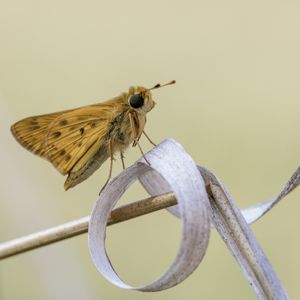
Insects fly, swim, crawl, dig, and walk. There are more than one million known species of insects, making up two-thirds of all animal life on the planet.
Mark Stanback, Professor of Biology emeritus at Davidson College, states, “While there are only about 11,000 species of birds or 35,000 species of fish, there are over 150,000 species of flies (order Diptera) and over 385,000 species of beetles (order Coleoptera). All these insects play a critical role in pollinating crops (estimated at 75% of all crops), and the loss of pollinators could lead to decreased crop yields and reduced food security. They also play vital roles in pest control, nutrient cycling, and decomposition. Additionally, insects are a critical food source for many species, including birds, mammals, fish, and reptiles, and their decline at the base of a food chain can affect the entire ecosystem.”
Recent studies have shown that insect populations are declining rapidly, which could have significant impacts on the environment and human food security. Long-term studies that have measured abundance of insects over time have shown significant declines. For example, a study conducted in Germany found that insect biomass has decreased by over 75% in the last 30 years. Another study conducted in the UK found that butterfly populations have declined by 58% since 1976, while bee populations have declined by 25%. And it’s not just abundance that is declining, a study conducted in Puerto Rico found that the number of insect species in the rainforest has decreased by 60% over the past 35 years. Declines have been observed across a range of habitats such as grasslands and forests, and around much of the world.
Joe Poston, professor of Biology at Catawba College and a co-author of the study, states “There are several factors contributing to the decline in insect populations. Habitat loss, pesticide use, climate change, and invasive species are some of the primary drivers of insect decline. The use of pesticides and insecticides, while intended to control pests, can also have unintended consequences and harm non-target species such as bees, butterflies, and other beneficial insects.”
Efforts are underway to address the issue of insect decline. Conservation measures such as habitat restoration, reducing pesticide use, and promoting sustainable agriculture practices can help protect insect populations and therefore, our food supply. Research is also ongoing to better understand the causes of insect decline and develop strategies to mitigate its impacts.
Climate change is also affecting insect populations. Changes in temperature and precipitation patterns can alter the timing of insect emergence and life cycles, affecting their ability to find food and mates. Changes in timing is also affecting other taxa, such as birds, that rely on the emergence of insects at particular times of year for things like feeding their young.
However, understanding the impact of climate change on insects can be particularly tricky. This study examined the assumption that various types of insects show similar responses to temperature across North America. Insects were sampled with Malaise traps (like a small mesh camping tent that intercepts and traps flying insects) at 96 sites in grassy habitats during 2019-2021. Investigators measured the total weight of insects (their biomass) in relation to temperature and time of season. The study found strong regional differences in the timing of insect emergence and their response to temperature (the scientific term here is ‘phenology’), even within the same taxonomic group, habitat type, and time of season.
Andrew Jacobson, a professor in the Environment and Sustainability department at Catawba College and co-author on the study, said “The study highlights the need to incorporate regional and taxonomic differences in the response to temperature in large-scale predictions about changes in insect populations and their causes. This research will be continued and expanded to investigate potential insect decline in North America with more results in three to four years.”
The full study can be found online at the Ecological Society of America (ESA): https://esajournals.onlinelibrary.wiley.com/doi/full/10.1002/ecy.4036
